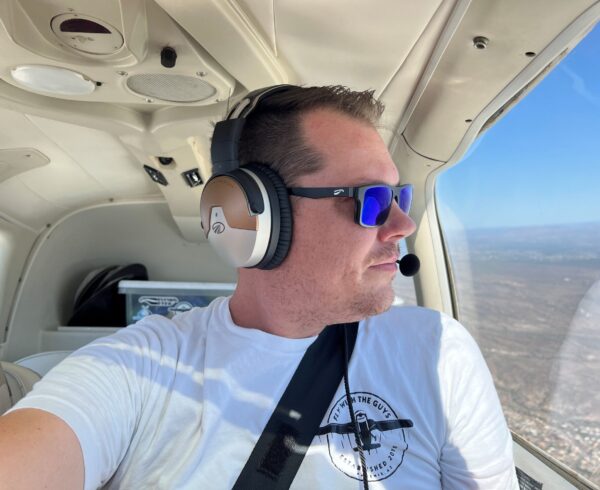Ever since I can remember, I’ve always wanted to be a pilot. As a grade-schooler, I read all the great stuff: The Flying Tigers, God is my Co-pilot, Thirty Seconds Over Tokyo, I Flew for the Führer, and so on. What I really wanted to do was get my hands on a WWII fighter. Flying sunk its claws into me very early on. Here’s what I can say after many years of flying: you never know what combination of events and experiences are going to get you where you want to be.
These days, I’m lucky enough to fly with the Commemorative Air Force’s High Sierra Squadron at the Reno-Stead airport. We operate a 1941 N3N-3 primary trainer and a 1953 L-19 Birddog liaison aircraft. We’re a little squadron, but we have a lot of fun.
Knowing that others have the same dream, I thought I’d share how I got here.
The Flying
I started flying right after college. My plan was to learn to fly through the military. Although I managed to earn a UPT class seat in the Air Force, a severe traffic accident left me medically disqualified before I could show up for duty. I had to find a different path.
I earned my private pilot certificate, bought a Grumman Traveler, and earned an instrument rating in it. The first step toward my warbird cockpit goal was a tailwheel endorsement. Even though I owned and flew a Grumman, I knew that I was going to need tailwheel experience, so I got the endorsement as soon as possible and stayed current. This would pay dividends later on when I started flying gliders.
I spent many years building time flying all over the western states in my Grumman before my wife and I decided to start a family. Having a baby meant graduating up to an aircraft with more hauling ability, so I traded my Grumman for a Piper Comanche. Owning a complex aircraft prompted me to add commercial and CFI certificates to my wallet. That was the next step toward a warbird.
Being an instructor, in my case, allowed me to check out and fly many different makes and models of aircraft. To date I have PIC time in nearly fifty makes and models and learning to fly a new one is still one of my greatest joys.
After moving to the Reno area in 2002, I added glider ratings to my commercial and CFI certificates. My brother-in-law was a glider pilot and told me about the world class soaring conditions in the area. Learning to fly gliders not only added another sight picture and more makes and models to my logbook, but in my case it led to an opportunity – *towing* gliders. Because of my commercial ASEL rating and my tailwheel experience, I was offered the opportunity to work as a towpilot. This allowed me to add hundreds of tailwheel hours and thousands of tailwheel take offs and landings to my logbook. Not only was the aircraft, a Piper Pawnee, a good transitional step into the N3N that I fly today, but as a towpilot, I could spend the whole day doing take offs and landings – great practice!
After another ten years of experience adding towing and soaring to my flying resume, I got into the Commemorative Air Force and checked out in our N3N. That’s it, that’s the flying that got me here. But the flying just doesn’t tell the whole story: there were a lot of people along the way and I literally stood on their shoulders to get here. That’s the rest of the story!
Read the follow up: My Path to a Warbird Cockpit: I Couldn’t Do-It Alone















This story caught my attention . I would very much like to hear Colin’s experience with the Lightspeed or any ANR headset in an N3N or Stearman or any open cockpit aircraft. My experience (much as I have hoped otherwise) has been that ANR (Lightspeed or otherwise) does not cut the mustard compared to passive. I’ve tried. I’m a fan of my Lightspeed in my C-180 but it (any other ANR ) doesn’t do the job out in the open cockpit. Very much looking for a solution for old pilots who save old airplanes.
Bill H.
Hi Bill, thanks for your attention, comment, and question. I have been asked about open cockpit before, obviously, as good noise reduction (however you get it) is a must in the open cockpit environment. I use a Zulu 3 in combination with a Gibson and Barnes open cockpit helmet (tailored to the Zulu 3). I also have a cloth version which is visible in my bio picture. Both of these combinations have worked really well for me. If you have tried this (or a comparable setup) with poor results, may I suggest that you contact the company? If this is the case, there may be something that is interfering with either the PNR or ANR. In any event, I would urge you not to give up as I have had very good results. Clear skies! Colin
Awesome story! I have known Colin for many years now, and am proud to call him my friend and a fellow pilot. Blue Skies, my friend!